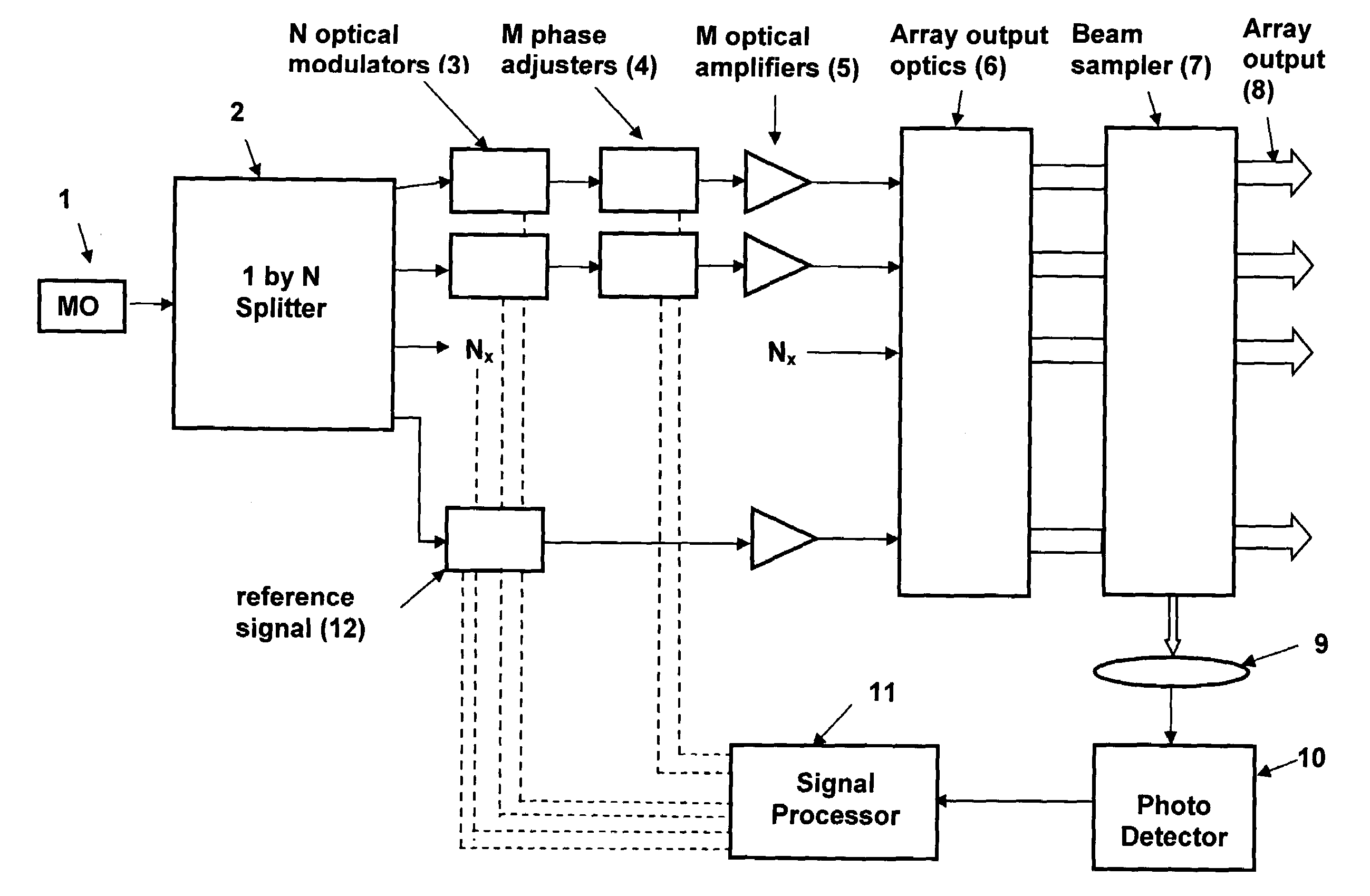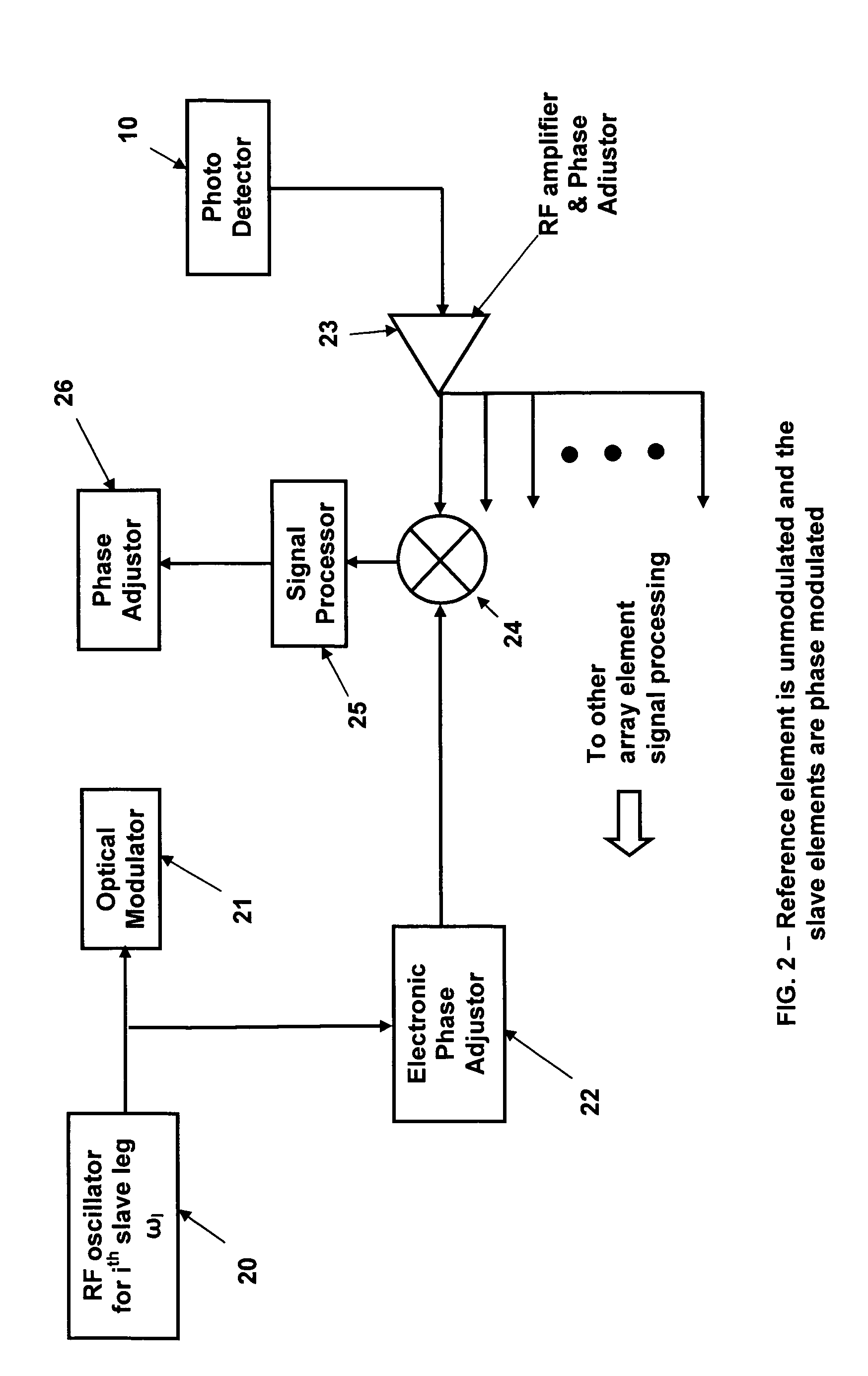Self-referenced locking of optical coherence by single-detector electronic-frequency tagging
a technology of electronic frequency tagging and self-reference, which is applied in the direction of laser optical devices, laser details, antennas, etc., can solve the problems of complex and difficult to implement spatial isolation of phase error signals of previous systems, and achieve the effect of easy scaling
- Summary
- Abstract
- Description
- Claims
- Application Information
AI Technical Summary
Benefits of technology
Problems solved by technology
Method used
Image
Examples
Embodiment Construction
[0012]A novel coherent beam combining system is described that offers not only highly accurate and robust phase locking but is readily scalable to hundreds of elements. Furthermore, this method, called Self-Referenced LOCSET, provides a simple and robust method that needs only a single detector and uses one of the array elements as the reference leg, thus eliminating the need for a separate reference beam. This technology is applicable to general systems of laser amplifiers, i.e. semiconductor, bulk solid state, gas, dye, as well as fiber amplifiers.
[0013]A block diagram of an embodiment of the present invention is shown in FIG. 1. The diagram begins with a master oscillator 1. There may or may not be an optical amplifier incorporated in the master oscillator laser. The output power from the master oscillator divided by a 1×N power splitter 2. Each of the N output signals from the 1×N power splitter 2 is then directed to N optical modulators 3 where each of the N signals is modulate...
PUM
 Login to View More
Login to View More Abstract
Description
Claims
Application Information
 Login to View More
Login to View More - R&D
- Intellectual Property
- Life Sciences
- Materials
- Tech Scout
- Unparalleled Data Quality
- Higher Quality Content
- 60% Fewer Hallucinations
Browse by: Latest US Patents, China's latest patents, Technical Efficacy Thesaurus, Application Domain, Technology Topic, Popular Technical Reports.
© 2025 PatSnap. All rights reserved.Legal|Privacy policy|Modern Slavery Act Transparency Statement|Sitemap|About US| Contact US: help@patsnap.com



